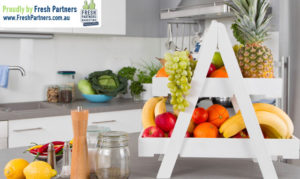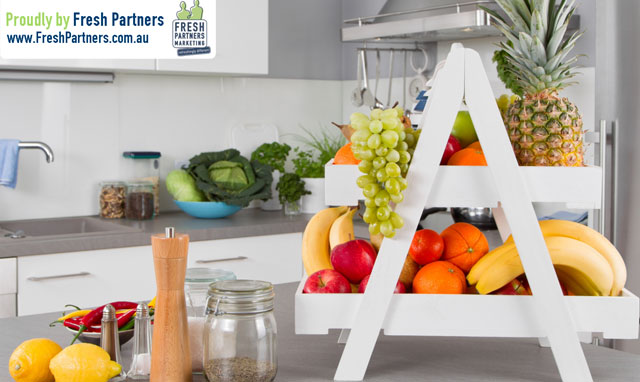Desirable eating or simply rotting on your bench?
Are your hard-earned dollars spent on nutritious food that you actually eat? To put it another way, how fresh are your fruit and vegetables when you come to eat them?
I must admit that it’s not unusual to find prior weeks’ fruit and vegetables expired and rotting in our crisper and fruit bowl. Frustratingly, despite good intentions, too much of our fresh food goes rotten and is thrown away.
This annoys me no end. Aside from missed health benefits and the hard yards that farmers put into growing food, the wasted dollars are particularly hard pills to swallow.
So, the next time my wife or I shop, I have that sinking feeling that it will happen again. Each time I see food rot, I don’t want to purchase more. And, attractive produce displays can actually trigger feelings of guilt. According to consumer surveys, I’m not alone. As a result, many consumers miss out on plentiful fruit and vegetables based on their fear of ultimately wasting what they buy.
Australian pineapple grower groups conducted a survey to determine how this impacts their industry.
The not-so-sweet pineapple
The results:
1. Most people know fresh pineapple (one of the most recognised fruits in the world).
2. A high proportion of Australians enjoy or love the taste of sweet fresh pineapple.
3. But, the average household buys one pineapple just once a year!
 Many consumers said they buy a pineapple keen to eat it, but it is often thrown away. Why? Well, no doubt it was left sitting in a kitchen for about two weeks, then little fruit-vinegar flies have caught whiff of the fruit’s aging flesh. The now brown fruit smells and tastes ‘beery’.
Many consumers said they buy a pineapple keen to eat it, but it is often thrown away. Why? Well, no doubt it was left sitting in a kitchen for about two weeks, then little fruit-vinegar flies have caught whiff of the fruit’s aging flesh. The now brown fruit smells and tastes ‘beery’.
This ‘beery’ fly-riddled pineapple is in their mind next time they see a pineapple display.It takes on average six months for a household to risk the pineapple investment again!
Storage and presentation are King
Ultimately, storage and presentation are King when it comes to limiting rotten, uneaten fruit and vegetables.
This means your fruit bowl must be at the ideal temperature for good shelf life. And, it must be accessible so produce isn’t forgotten or bypassed for processed, often more packaged options.
It doesn’t take much for our fruit to rot. Bananas, tomatoes, stone fruit and most tropical fruits keep best at 8 to 12 degrees Celsius and berries, apples and citrus at 3 degrees Celsius . That is a lot cooler than many Australian households during most of the year. Houses are closed up for much of the week, and have temperatures between 16 and 30 degrees Celsius where most fruit bowls sit.
The issue with the cool temperature of a crisper in the fridge is that once good fruit is placed in here it is often ‘out of sight and hence out of mind’.
If only good fruit could be placed in clear open sight in the home and at the ideal temperature for each item. We would be challenged to eat better by the vivid colours and attractive aromas of good food readily accessible
While we all know that encouraging households to increase their consumption of fruit and vegetables will lead to better health and vastly improved quality of life, as a fresh produce industry it would improve the plight of our growers and the produce industry as a whole.
Surely it is the challenge of the produce industry to develop solutions that make it easier and more enjoyable to eat better? We know that fresh fruit and vegetables are awesome, but how can we help make them stay that way after purchase?
Your thoughts?
